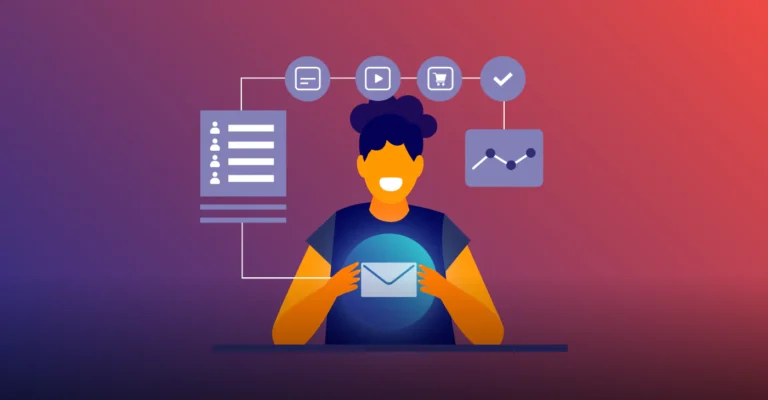Table of Contents
- What is Personalization in Email Marketing?
- Benefits of Personalization
- How to Implement Personalization Strategies
- Tools and Software for Email Personalization
- Common Mistakes to Avoid
- Case Studies of Successful Personalization
- Future Trends in Email Personalization
- Conclusion
What is Personalization in Email Marketing?
Personalization in email marketing refers to tailoring email content to individual subscribers based on their unique preferences, behaviors, and past interactions. This dynamic approach helps create a unique experience for each recipient, significantly enhancing their engagement with your emails. Targeted email marketing services leverage these techniques to engage users more effectively and drive conversions. Personalization may be as simple as including the recipient’s name in the greeting card or as complicated as suggesting goods they would find interesting. To build loyalty and trust, personalization attempts to make the receiver feel appreciated and understood. Marketers may significantly boost the efficacy of their email marketing by providing content that speaks to each user’s needs and preferences. Beyond just including a user’s name, personalization now incorporates dynamic material that adapts to their activity and advanced algorithms that forecast their preferences and future activities.
Benefits of Personalization
Personalized marketing emails have been shown to improve engagement metrics and overall campaign success significantly. According to a study by Campaign Monitor, personalized emails generate 6x higher transaction rates than non-personalized ones. Other benefits include:
- Increased open and click-through rates.
- Enhanced customer loyalty.
- A higher return on investment.
Personalized emails offer these obvious advantages and significantly improve the client experience. Users are more likely to interact favorably with a company when they receive material catering to their needs and interests. This results in better client satisfaction and the potential to convert one-time consumers into repeat customers. Customized marketing initiatives can set your company apart and foster enduring customer connections.
How to Implement Personalization Strategies
Segment your email list into smaller groups according to demographics, past purchases, and browsing habits to apply successful personalization tactics. This makes your emails more interesting and relevant by helping you customize the content to the demands of various groups. To ensure that every recipient of an email receives the most pertinent information, use email marketing software’s dynamic content to tailor emails at scale. Set up automated emails based on user activities to reach recipients at the most convenient times. Examples of these are post-purchase follow-ups and reminders for abandoned carts. Conduct A/B testing regularly to identify the best personalization strategies, and keep an eye on the results to iterate your plans for better performance over time.
Tools and Software for Email Personalization
Multiple tools are available to help marketers execute personalized email campaigns effectively. Platforms like Mailchimp, HubSpot, and ActiveCampaign offer features such as segmentation, automated workflows, and dynamic content capabilities. These tools make it easier to implement personalization strategies and track their effectiveness. Integrating customer relationship management (CRM) tools with email marketing platforms can enhance personalization by providing richer data insights. This integration allows marketers to create highly targeted campaigns based on comprehensive customer data, improving the relevance and impact of each email.
Common Mistakes to Avoid
Personalization is powerful, but marketers should avoid common mistakes to ensure a positive user experience. Over-personalization can make emails appear intrusive while ignoring data privacy is crucial for maintaining trust. Compliance with regulations like GDPR and CCPA is essential to avoid penalties and damage to the brand’s reputation. Tailoring personalization strategies to each segment’s needs and preferences is also essential for email relevance and engagement.
Case Studies of Successful Personalization
Various companies have successfully implemented email personalization strategies with impressive results. A prime example is Amazon, which uses purchase histories to recommend related products, increasing the likelihood of additional purchases—similarly, Spotify leverages listening behavior to create personalized playlists, fostering user engagement and retention. These examples demonstrate the significant impact that effective personalization can have on customer engagement and sales. By understanding and addressing each customer’s unique needs, these companies create highly relevant and compelling experiences that drive results.
Future Trends in Email Personalization
Developments in artificial intelligence and machine learning will fuel email personalization. Thanks to these technologies, customization efforts will reach new heights, providing more accurate and timely personalized information through predictive analytics.
Moreover, more dynamic emails are expected to be sent out, which change their content in real-time as they are opened. This dynamic approach will help personalized email campaigns be even more successful, giving each recipient a more unique and engaging email experience.
Conclusion
Personalization in email marketing is now a must for companies looking to improve engagement and yield better outcomes rather than a luxury. Marketers may develop customized experiences that resonate with individual subscribers using data and sophisticated tools. Employing best practices and avoiding typical traps can allow businesses to leverage personalization to boost email marketing results significantly. It’s time to implement these tactics and maintain your advantage in the cutthroat world of digital marketing.

Daniel J. Morgan is the founder of Invidiata Magazine, a premier publication showcasing luxury living, arts, and culture. With a passion for excellence, Daniel has established the magazine as a beacon of sophistication and refinement, captivating discerning audiences worldwide.





